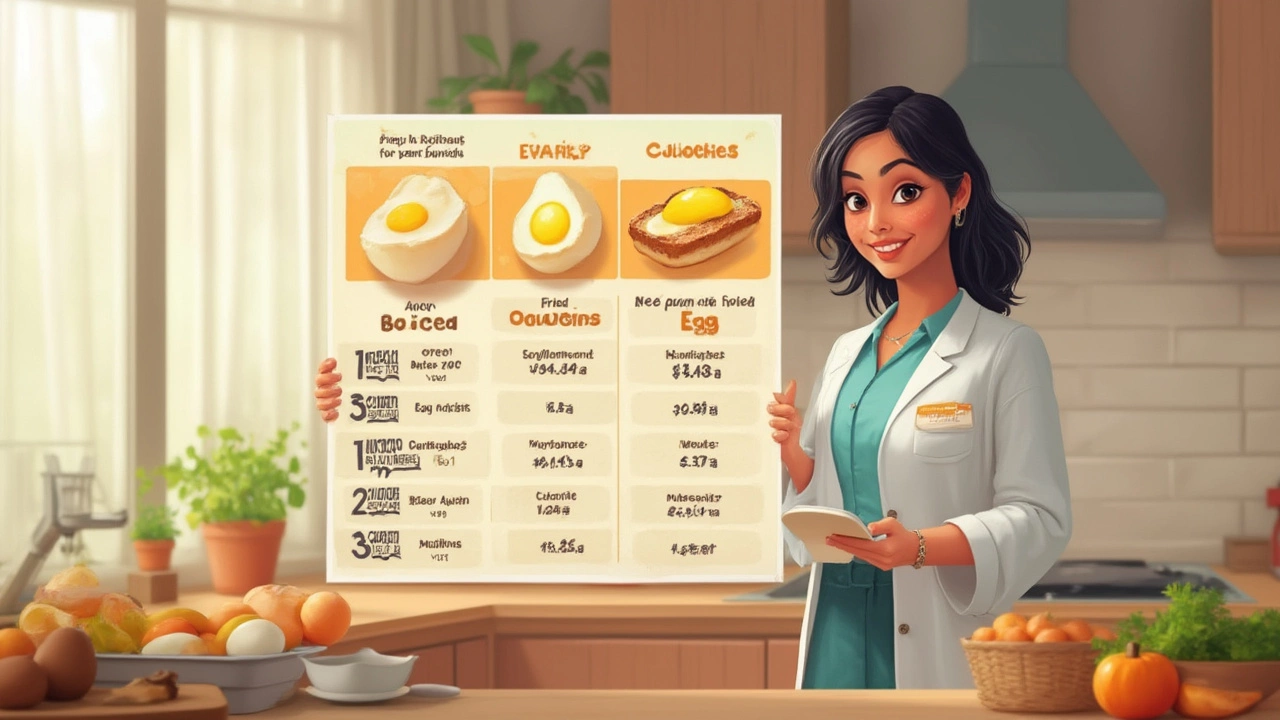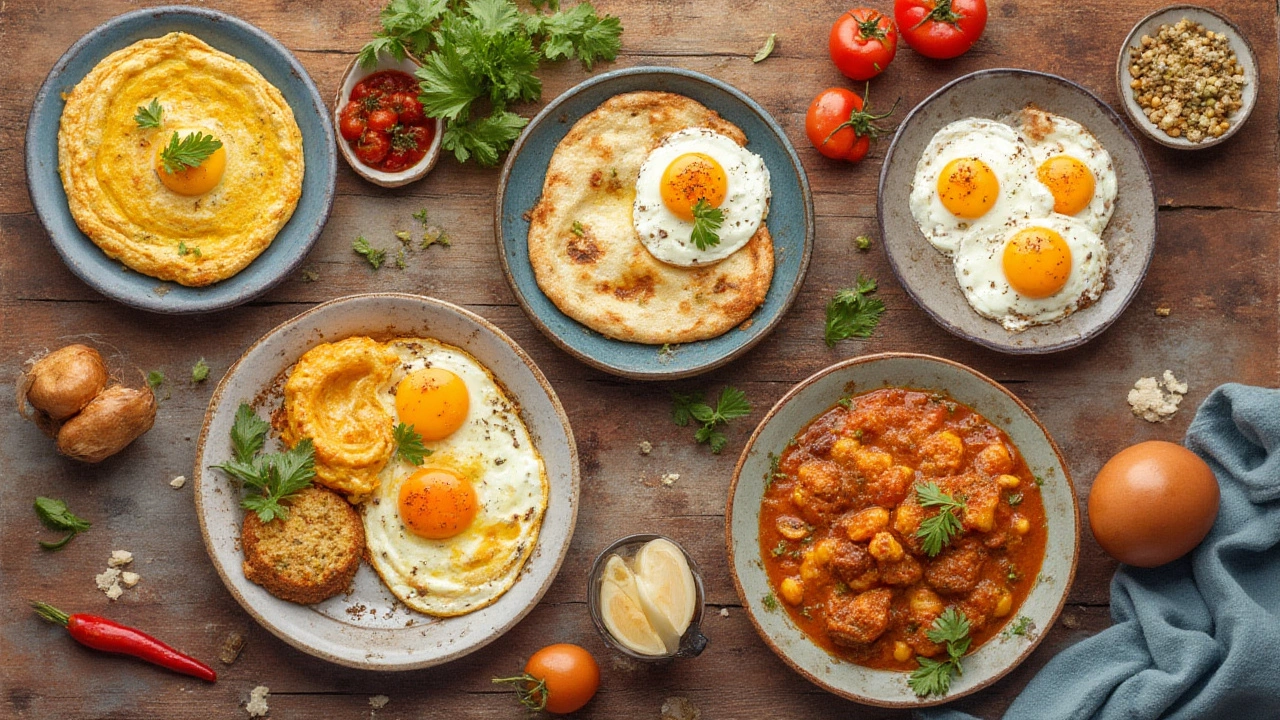Crack open a fresh egg, and you may not realize it's a tiny nutrition powerhouse. But have you ever wondered how those delicate shells translate to your daily calorie count? Eggs can be confusing—some say they’re a dieter’s best friend, others whisper about cholesterol. So what’s the real story, calorie-wise? And how does the way you cook your egg change things? Let’s clear the fog once and for all, so you’ll know exactly how to make eggs work for you—whether you love an early morning scramble or a perfectly soft-boiled treat.
How Many Calories Are in a Single Egg?
The answer sounds simple, but there’s more to it than just a number. On average, a large chicken egg contains about 72 calories. You might spot slightly different numbers depending on where you look, but 72 is the benchmark used by the United States Department of Agriculture (USDA). Want specifics? Here’s a quick breakdown of calories by egg size, laid out so you can easily compare:
| Egg Size | Grams (approx.) | Calories |
|---|---|---|
| Small | 38 | 54 |
| Medium | 44 | 63 |
| Large | 50 | 72 |
| Extra Large | 56 | 80 |
| Jumbo | 63 | 90 |
But let’s not stop at calories, because an egg is so much more than a number. One large egg delivers about 6 grams of high-quality protein, making it a classic muscle-builder food. You also get essential vitamins like B12, B2 (riboflavin), vitamin D—plus a good dose of selenium, which supports your immune system. Most of the calories come from the yolk, which carries about 55 calories, while the egg white only clocks in at about 17. That’s why you’ll find fitness fans sometimes eating just the whites for a lower-calorie, zero-fat hit of protein.
Wondering where the fat sits? The yolk is home to all the fat (around 5 grams per large egg), while the white is pretty much pure protein. The yolk contains cholesterol—roughly 186 milligrams in a large egg—but current research shows that most people don’t need to stress much about dietary cholesterol. The American Heart Association now agrees: “A healthy individual can include up to one egg per day as part of a healthy diet.” (If you want to see the source, check their updated guidelines from 2020.)
Keep in mind: if the egg is scrambled with butter, fried in oil, or used in a decadent dessert, the calorie count jumps quickly. A plain poached egg? Still about 72 calories. But a fried egg can add another 50 calories, depending on how much oil or butter you use. It’s easy to forget those extras add up fast.

Interesting Egg Facts, Myths, and What’s Actually True
Eggs spark so many debates: Are brown eggs healthier than white? How long do they last? What’s up with cage-free versus free-range? Let’s bust some myths and share a few surprising truths without the fluff.
First up, brown versus white eggs—there’s no nutritional difference. The color depends entirely on the breed of the hen. Brown eggs cost more mostly because those hens eat more, not because the eggs are better.
Some folks worry about eggs and heart health thanks to the cholesterol, but modern studies keep knocking down that old advice. According to Harvard’s School of Public Health, eating an egg a day for most people doesn’t raise heart attack or stroke risk. Here’s a direct quote:
“For most people, an egg a day does not increase heart disease risk and can be part of a healthy diet.” – Harvard T.H. Chan School of Public Health
If you do have diabetes or a certain genetic condition that affects cholesterol, always follow your doctor’s advice. And, if you want to double-check an egg’s freshness, pop it in a bowl of water: fresh eggs lie flat, while older ones tip up or float. That’s a neat kitchen trick for you!
Now about shelf life—a properly stored egg (refrigerated in the original carton) keeps for up to 5 weeks after purchase. To keep egg calories in check, consider alternative cooking methods. Want a list?
- Boiled (hard or soft): still about 72 calories
- Poached: same, no extra fat
- Scrambled: can climb to 90+ calories once you add a splash of milk or butter
- Fried: varies—it could reach 120 calories if cooked in one tablespoon of oil
And a quick tip: to boost flavor without calories, sprinkle with herbs, chives, a dash of paprika, or a squeeze of lemon after cooking. You’ll fill up on protein, not unnecessary fat. If you’re on the go, a hard-boiled egg slips easily into a lunchbox or gym bag, offering real energy with hardly any prep.
Eggs are natural multitaskers, too. Their protein keeps you fuller than a sugary cereal, which might help with weight control. And since they’re inexpensive and easy to store, eggs can turn leftover veggies, cheese, and herbs into a satisfying meal in minutes—think omelets, frittatas, or even breakfast-for-dinner tacos.
Got an allergy? Egg allergies are most common in kids, but some adults have them too. Always read ingredient lists—eggs sneak into baked goods, pasta, even salad dressings. If you’re vegan or allergic, consider great replacements: aquafaba (the liquid from canned chickpeas), mashed banana, or flaxseed mixed with water. These swap-ins don’t taste like egg, but they work beautifully to bind and fluff up bakes.

Making Eggs Work for Your Lifestyle
So what’s the best way to add eggs into your daily eats? It comes down to how you like to cook and what fits with your health goals. Here’s where flexibility is your friend. If you’re watching calories, sticking with boiled or poached eggs is a safe bet. If you crave a little richness, a simple scramble or sunny-side-up egg cooked with a minimal amount of olive oil packs both flavor and nutrients. Eggs make breakfast easy, but they’re champions for lunch and dinner, too. Try topping a rice bowl with a runny egg, or make avocado toast even more satisfying—and much more filling—with a sliced hard-boiled egg on top. They’re quick to cook, so you don’t need complicated meal prep to eat well.
If you’re lifting at the gym, eggs help build muscle without empty calories. Thanks to their complete protein (meaning all the essential amino acids), they’re a solid post-workout snack. Dieticians have actually pointed out that the protein in eggs is more easily digested and absorbed than many other sources, including meat. And if you’re minding your wallet, a dozen eggs offer way more nutritional bang for your buck than many fancier sources of protein. Pennies per serving, really!
Some people worry about hormones or antibiotics, usually because of reports about large-scale egg farming. By law in the U.S., hens that lay eggs for human consumption can’t be given hormones, and antibiotic use is rare. If you want the most natural option, look for “pasture-raised” or “organic” labels at the store. Often, these eggs come from hens with more time outdoors and feed that’s closer to what they’d eat in the wild.
What if you’re cutting carbs? Eggs are the answer—they’ve got practically zero carbs, so they work in keto and low-carb diets with ease. Paired with veggies and whole grains, they sit nicely in a Mediterranean or DASH eating plan, too. Of course, moderation matters. A couple of eggs a day fits in most healthy diets, but don’t make eggs your only protein. Mixing in beans, fish, chicken, or tofu gives your body everything it needs and mixes up your menu.
Kids can enjoy eggs starting at around six months old, unless they have an allergy risk. Pediatricians recommend introducing whole cooked egg early on to reduce allergy chances—and eggs deliver iron and choline, both important for brain growth. For seniors, eggs are a gentle, easy-to-chew protein that comes with vitamin D (hard to get from food alone), making them a smart pick for bone strength and staying active.
Egg labels can read like a foreign language. If you see “omega-3 enriched,” it means the hens ate a diet with flaxseed or fish oil, bumping up the heart-healthy fats in their eggs. They taste and cook the same, but can give your nutrition a little boost. And don’t worry if your egg has a richer yolk color—this just means the hen ate more pigment-rich food, not more nutrients.
To make your eggs safer and even tastier, cook them until yolks and whites are firm if you’re worried about rare foodborne illness. If you adore runny yolks, just buy pasteurized eggs—they’re heat-treated to zap bacteria before you even crack the shell. No need to skip out on your favorite style.
Here’s a fun fact to close: the incredible egg was chosen as the reference point for measuring protein quality back in the 1970s, because it’s that balanced. Few foods play as many roles in sweet treats, quick snacks, and serious meals as the humble egg. So whatever your calorie budget, the egg can almost always fit right in—delicious, nutritious, and simple to prep any way you please.